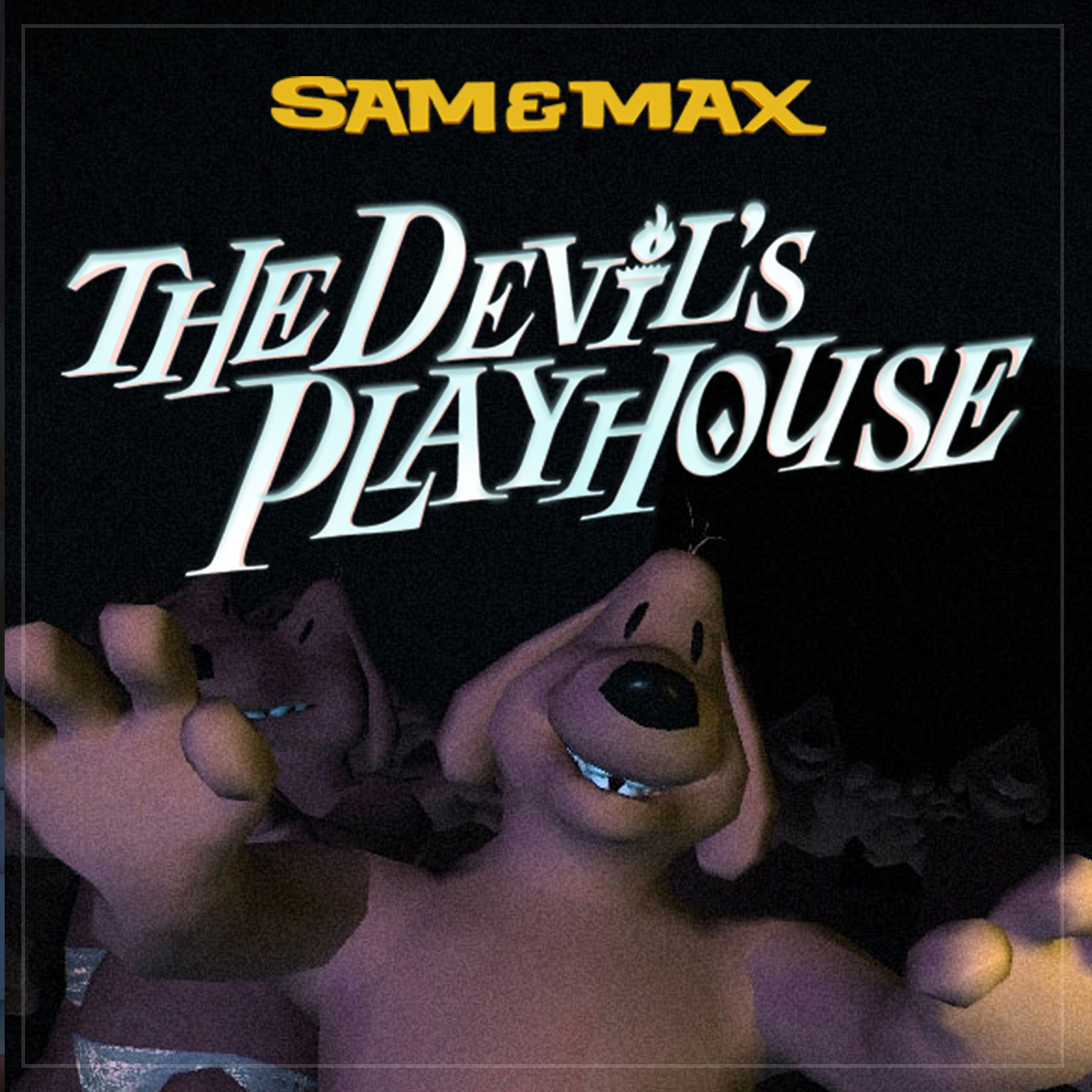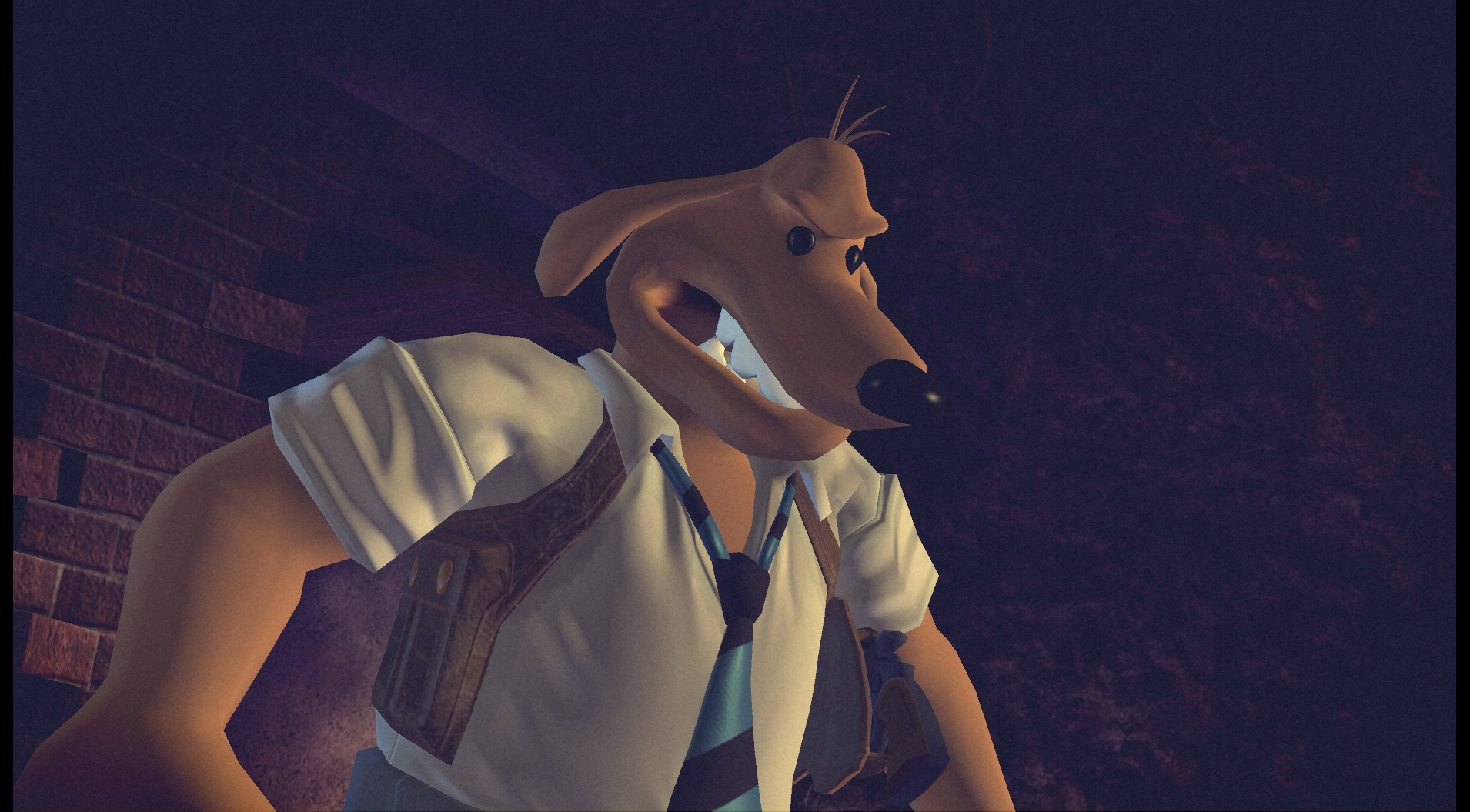Articles

Sam & Max: The Devil's Playhouse They Stole Max's Brain!
This is kind of late, but here it is: Mixnmojo's review of the third episode of the third season of Sam and Max: The Devil's Playhouse: “They Stole Max's Brain!” Is it as good as episodes one and two? Better? Worse?
“They Stole Max’s Brain!” answers an eternal question that has preoccupied the minds of scientists and philosophers nowhere: could Sam and Max, forever partners, work as separate, individual characters? It’s a question posed from the get-go, the episode opening with Sam discovering Max’s de-brained body laying in the boiler room beneath their office. Present on the scene are the two doomsday cultist mole men from “The Penal Zone”. Sam has questions; they have nothing. Sam has fists; they have answers.
It isn’t a side of Sam you’ve seen before. He’s angry. His fedora and jacket are cast aside, his sleeves rolled up. He talks tough. He is tough. The mole men say they were knocked out, that they were still unconscious when Max’s brain was stolen. Sam doesn’t believe them. The game takes this opportunity to introduce a new gameplay mechanic – interrogation – into the formula. The mole men will tell you things; if you spot a lie, call them out on it. You can intimidate them, pull out a gun on them. It’s Philip Marlowe in a mutt suit, his anger dial turned up.
Mole men are easy to break, though, and to get the dirt on who stole Max’s brain, you’ll need to connect some seemingly unrelated dots. So Sam chucks Max’s corpse into the DeSoto and drives into New York’s misty night. He passes jazz bar signs and run-down, gaudy cocktail lounge invites, his car lights illuminating the darkened streets. He narrates. He ponders. He’s about as optimistic as the guy at the wrong end of the firing squad. It’s noir, in all of its self-parodying glory. You stop and wonder why Sam and Max has never taken the noir route before.
I love noir like corruption loves a 1940s police department, and I’m happy to report that the noir sections deliver. The game does away with traditional adventure game formula in favour of dialogue-based puzzles: Sam asks questions, you spot a hole in the guy’s story and you tell him about it. You slowly piece events together. You visit the next guy – three in total –, ask more questions, and backtrack. There are no traditional adventure game elements in this section. When Sam finally gets it, he drives down to where the action is, in the hopes of retrieving Max’s brain.

Noir was a good choice for opening-up the episode. The genre has a tendency to be simultaneously serious and absurd, grim but funny. This is what “They Stole Max’s Brain!” tries to do, and at which it succeeds to a large degree. Sam clearly cares about Max (he wouldn’t be sticking guns in a rat’s face if he didn’t), but the game is funny, and is even willing to make fun of the literary genre it’s inhibiting. Talk to a guy, click the “Noir” option, and Sam talks about how we’re all rats clawing at each other’s eyes, trying to escape this sinking ship called life. It’s good noir, but it’s also funny noir. It’s an admirably clever choice.
It’s too bad, then, that the game slowly sheds away the noir as it goes along. Almost all those screenshots and videos Telltale released come from the first act, by the way. So while it’s kind of a relief to be given direct control of Sam – to walk, talk, examine and pick up – in the second act, I’d have still liked more of the interrogation. It’s an interesting, fun mechanic with a lot of potential, and sadly most of that potential is never explored.
I get why they did it. Really. There’s a laser gun fight between some talking gorillas and a seemingly immortal Papierwaite that needs to take place for story-related purposes. They need to bring the insane sci-fi parody back, and it inevitably washes down a lot of that noir flavour. Sam walks into the wrong room at a museum and sees Max’s brain, having the time of its life (no, really). The atmosphere suddenly changes: the game uses a change in mood to reflect a change in Sam’s mood as well. He even makes a joke about his noir state later. It’s actually a little revealing that he reverts to being his normal self as soon as he sees the possibility of his little buddy resurrecting.
The little buddy. If you thought that removing any potential for physical wanton destruction harmed the lagomorph’s potential for entertainment, humour and/or violence, you were wrong. It turns out Max as a brain – or, really, Max as a credit card and a rain cloud – is just as fun and interesting as Max diving for a ringing telephone. You can use him – optionally, mind – to find out more backstory to what has happened since the last time brain and body were together. The way he insults Skunkape and Papierwaite just makes it that much better.
A little quibble is the lack of new psychic powers. To the game’s credit, it doesn’t promise them, and what it has it uses creatively and in funny ways. You turn Max into a credit card and use him to swindle a rat out of a prized possession. You turn Max into a flying zeppelin and shoot it. It’s insane, but in a good way. Even the little things matter: when you start seeing the game from the point-of-view of another psychic character, you see different images than the frankly-quite-insane things Max sees when in brain mode, for example. Nice touch, and highly commendable.
It’s just a shame that the interrogation mechanic wasn’t tapped into more exhaustively.
A slightly less graceful transition in acts is the one from act two to act three. Gone is the science-fiction-noir-with-animals. Here now is the desert. I’m not sure if the sudden jump in atmosphere works. The game takes a three-trial structure that I’ve been hoping Telltale would avoid. It makes the section feel formulaic, which is hardly a good thing when it’d been so creative up till that point.
Another so-so element: two puzzles are solved in the same way. You just do the same thing – twice – to solve two different puzzles. To the game’s credit, it made for an interesting challenge. To its discredit, it was a little unfair. The game’s hit the formulaic structure at that point, so it took a bit of thinking – and prodding people who had played the game to share some hints – to get answers. I just wasn’t expecting two puzzles to be done with one answer in mind.
One thing that irked me personally was that I’d sometimes think of solutions the designers didn’t want. There’s a mysteriously-disappearing headset I could’ve used, for example. There were a couple of times I thought the Crime-o-Tron would help, but where I couldn’t use it.

Sometimes I made a connection before Sam did, and I simply had no idea why it wasn’t working. It happened a couple of times in the interrogation scenes, even though, to be fair, the game’s tendency to darken out options with tried-and-tested dead ends helped prod me along. Yet when you have that kind of worry at the back of your head – that you might know what to do but not be able to tell Sam how to do it – you forget to look at alternative approaches to puzzles. There’s a puzzle with a credit card that frustrated me because I thought I was on the right path, that I simply couldn’t get Sam to understand, and that I was an utter moron. It turned out that I was, in fact, an utter moron, and that the solution was much easier than I’d imagined (it was one of the aforementioned do-the-same-thing-to-solve-different-problems puzzles).8
Other things: There’s a dumb gorilla named Tyron that guards the museum you’re in during act two. How Sam convinces him not to shoot him is done with that typical adventure gamey “just because” kind of reasoning that makes me wish it was a puzzle instead. Then there’s nitpicking, like a projector which shows four random objects in the sky, one of which you need to solve a puzzle. I can’t quite see why you’d need a projector that shows a toaster. It harms the suspension of disbelief.
Yet, the episode really, really works. I mean, hell. There’s more insanity stuffed into this than in a Middle Eastern political crisis, and I say this as a guy who lives in the Middle East. “They Stole Max’s Brain!” heralds the return of one Mike Stemmle, seventeen years after Hit the Road and six years after the cancellation of Freelance Police. It’s one hell of a comeback. Anyone who had pacing issues with, say, “The Trial and Execution of Guybrush Threepwood” will find them in significantly less doses. Stemmle has – along wth co-lead Joe Pinney (“Lair of the Leviathan”) - crafted a brilliant episode, one that showcases, again and again, why I love Sam and Max so much. Insane puzzles, check. Pure fun, check. Witty and funny dialogue, check and check. It has the best line of the entire series (“You Americans are all animals! Animals!”). And it’s got some absolutely superb puzzles, partly due to the pirate face-off mentality that carried over from “Lair of the Leviathan”, partly due to the designers having contagious fun with their puzzles. But it’s not perfect.
I’m aware of the irony. If it sounds I’m being unfairly harsh on the game, then it’s just because Telltale themselves have been raising the bar, again and again, for a while now. Compare it to Season One’s third outing, “The Mole, the Mob, and the Meatball”, and you see how far they’ve come. So let me make this clear: This is a very, very good game, probably on par with Telltale’s best efforts yet. I chose to pass on time with friends to play it. That’s a hell of a compliment.
It’s an exciting time for adventure game fans, and Telltale are the reason. The writing, the puzzles, the constant invention when it’s being good: it’s all fun. Even the voice acting – now with the world’s greatest Earl Boen impersonator as the mysterious Doctor Norrington and one Marius “Majus” Fietzek as a hilarious European tourist – is fun. There’s a few flaws, but that’s OK. I may be harsh in this review, but don’t let that counter my other point: games as good as Sam and Max: The Devil’s Playhouse come rarely. If you play one game this month – or, hell, so far this year – make it this one. You won’t regret it.
I can’t wait to see what the future brings.